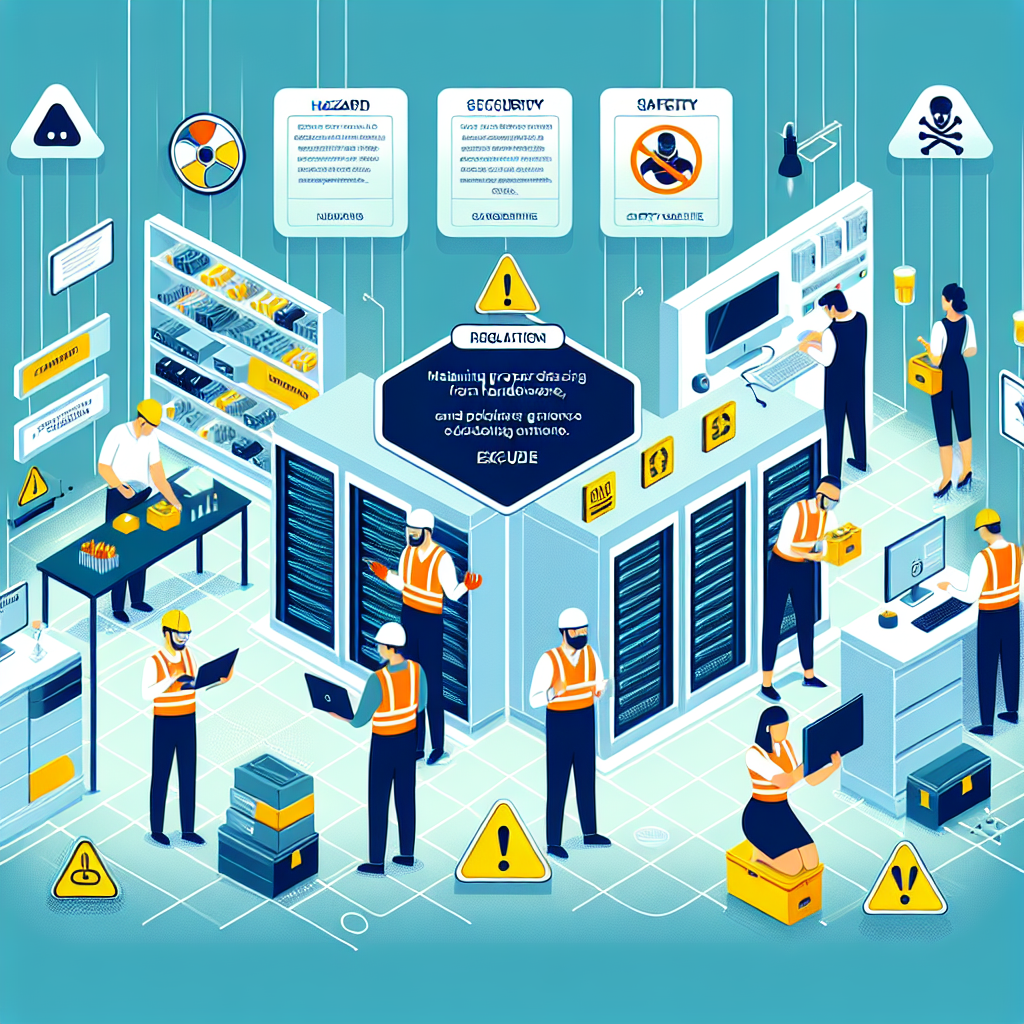Your cart is currently empty!
Understanding OSHA Regulations for Data Center Safety: Compliance Guidelines for IT Professionals

Data centers are critical facilities that house and manage the IT infrastructure that supports businesses and organizations around the world. These facilities are essential for storing and processing vast amounts of data, making them a key component of modern business operations. However, data centers can also pose significant risks to the health and safety of the workers who operate and maintain them.
To ensure the safety of workers in data centers, the Occupational Safety and Health Administration (OSHA) has established regulations and guidelines that must be followed by IT professionals and other employees working in these facilities. Understanding these regulations is essential for maintaining a safe working environment and avoiding potential accidents and injuries.
One of the most important OSHA regulations that IT professionals in data centers must be aware of is the General Duty Clause, which requires employers to provide a workplace that is free from recognized hazards that are likely to cause death or serious physical harm. This means that data center operators must take steps to identify and address potential safety hazards in the facility, such as electrical hazards, fire risks, and ergonomic issues.
In addition to the General Duty Clause, OSHA has specific regulations that apply to data centers, such as the Control of Hazardous Energy (Lockout/Tagout) standard, which requires employers to establish procedures for controlling hazardous energy sources during maintenance and servicing activities. This regulation is particularly important in data centers, where workers may need to access electrical equipment and other potentially dangerous machinery.
Other OSHA regulations that IT professionals in data centers must be familiar with include the Electrical Safety standard, which sets requirements for safe work practices when working with electrical equipment, and the Personal Protective Equipment standard, which requires employers to provide appropriate protective gear to workers who may be exposed to hazards in the workplace.
In addition to following OSHA regulations, data center operators should also implement best practices for safety and compliance, such as conducting regular safety inspections, providing comprehensive training for employees, and maintaining accurate records of safety incidents and training activities. By taking these steps, IT professionals can help ensure the safety of themselves and their colleagues while working in data centers.
In conclusion, understanding and complying with OSHA regulations is essential for IT professionals working in data centers. By following these regulations and implementing best practices for safety and compliance, data center operators can create a safe working environment for their employees and reduce the risk of accidents and injuries. By prioritizing safety and compliance, IT professionals can contribute to the overall success and efficiency of their data centers.

Leave a Reply